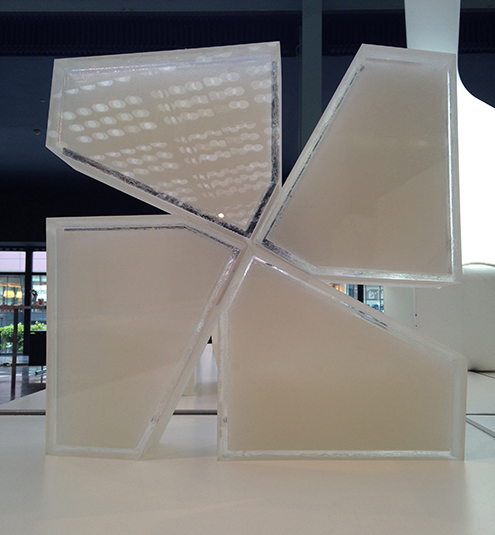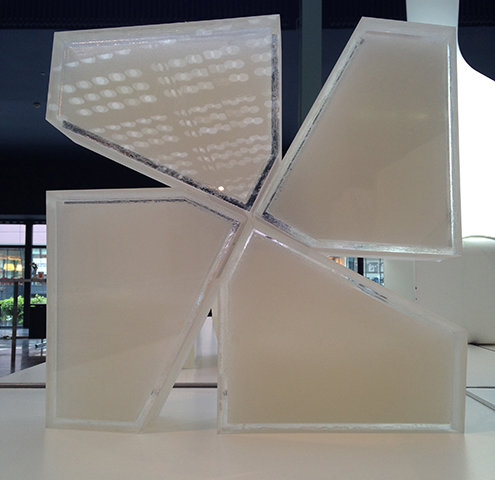Phase-change materials can lead to a huge reduction in energy costs when used in walls. A team from the Faculty of Architecture and the Built Environment has received an STW grant in order to identify exactly the thermal effects of transparent ‘DoubleFace’ elements.
The idea is actually very old - trombe walls were in use a hundred years ago as a means of retaining solar heat indoors. The only difference is that the modern variant makes use of phase change materials (PCMs) rather than dark, heavy bricks. “Some of these materials have the major advantage that they are transparent, if that is wanted,” explains researcher Martin Tenpierik. “Moreover, nowadays we can use algorithms to calculate accurately what the effect of capture and emission of solar heat will be. We can use this information to develop the optimum trombe wall.”
The DoubleFace 2.0 project is a follow-up to a previous 3TU research project. STW sees potential in the solution conceived by a team from TU Delft and the Eindhoven University of Technology, and has provided a grant of a quarter of a million euros to TU Delft for further development. DoubleFace is a translucent system of blocks filled with PCMs. In the winter, the heat from the sun liquefies the material, allowing an increased penetration of light, while the element re-solidifies in the evening, slowly emitting heat. As the compartmentalised system is able to rotate about its axis, it has exactly the opposite effect in the summer. Unlike in the case of an ‘old-fashioned’ trombe wall, no large building mass is needed in order to achieve the effect of passive heat regulation.

Salt hydrates
The next stage of the research is about looking for the ideal design, insulation materials, and PCMs. As far as the latter is concerned, the focus is primarily on salt hydrates. Thanks to their low melting temperature of around 20 to 25 degrees Celsius, they could be highly suitable. “Given that our system has to be effective in both summer and winter, we are investigating whether we need to use two different types of PCM,” says researcher Michela Turrin. “This is to do with the fact that PCMs are often only effective in a very narrow range of temperatures.”
During the next two years, all kinds of experiments involving materials and geometric shapes will be carried out. In previous experiments, the researchers used Plexiglass elements filled with a thin layer of aerogel (insulator) and a few centimetres of PCM. With a rise in temperature and the transition to the liquid phase, it appeared that the transparency of the blocks varied between roughly three and more than thirty percent. Simulations have since shown that this can yield a reduction in energy consumption of forty percent compared to rooms without a trombe wall.
The researchers hope to develop a concept that is suitable for homes and offices alike. DoubleFace blocks can be used as wall elements but also as decorative elements, to be placed in front of windows. In the first project phase, the choice fell on blocks in the shape of a hexagon. This resulted in a lively pattern with considerable strength. As the concept continues to be developed, 3D printing will play an important role. Using a 3D printer, it is possible to make a honeycomb structure with specially printed cavities and channels on the inside. This can prevent unmixing of the PCMs when they change from a solid to a liquid state. A print robot will be purchased from the research budget so that a surface of a few square metres can be printed at once. Thermochromic glass may also be used in further development of the concept.
The price of PCMs and aerogels currently makes mass application difficult. Tenpierik: “However, 3D printing was also unaffordable ten years ago. This is an emerging market, with enormous opportunities.”
The DoubleFace team consists of Dr Martin Tenpierik, Dr Michela Turrin, ir. Yvonne Wattez, and Tudor Cosmatu MSc.
